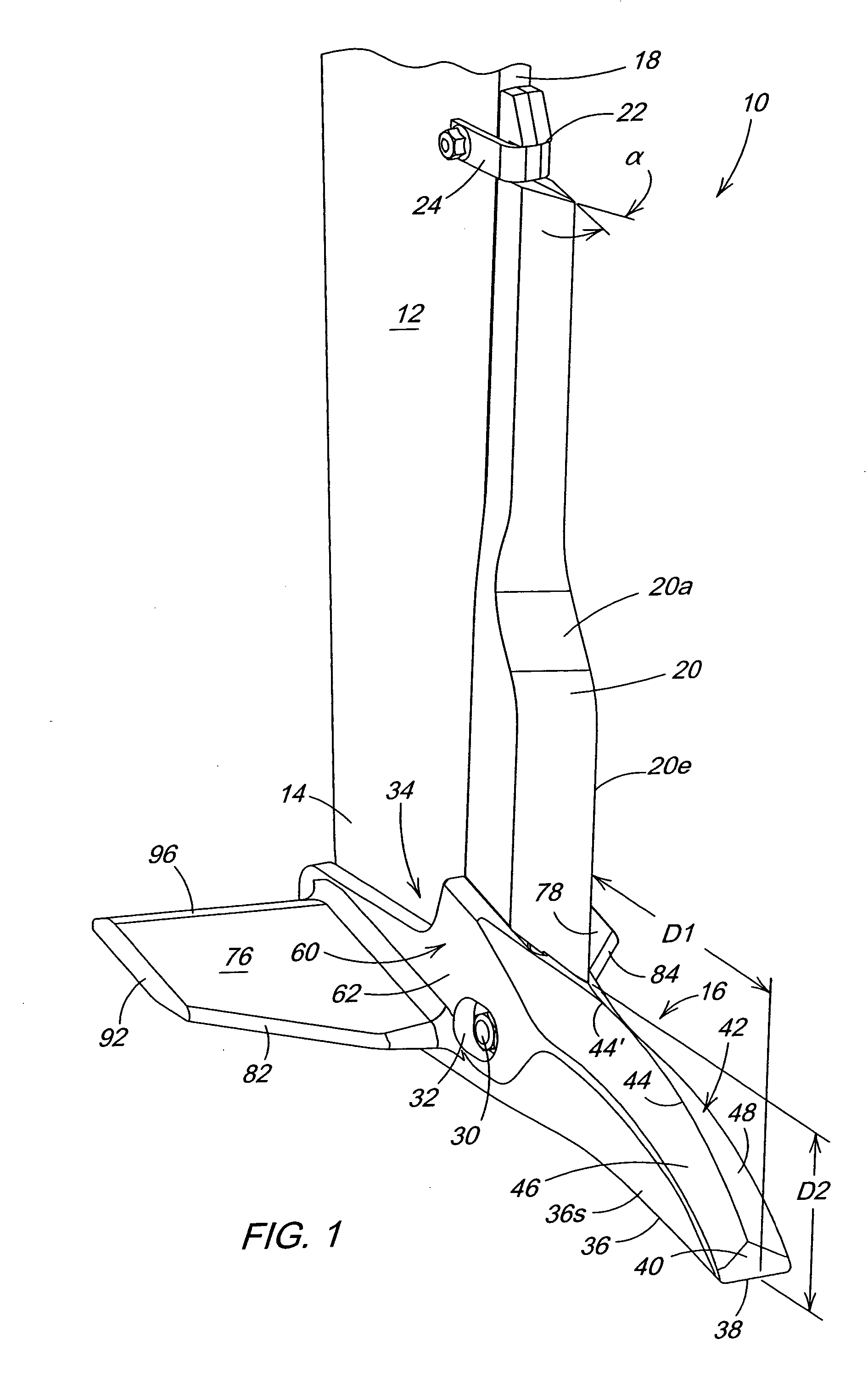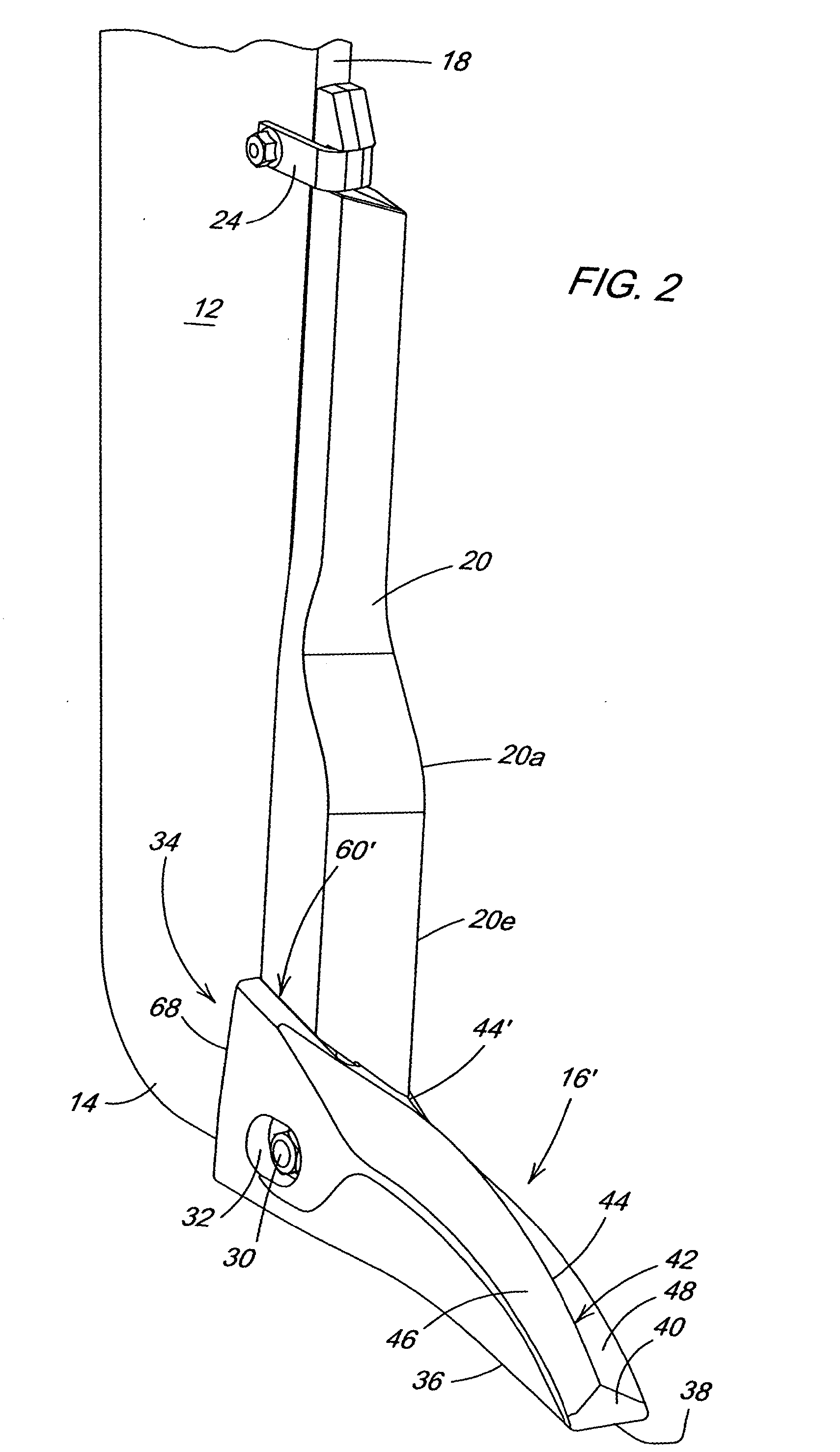Low disturbance deep tillage point
a deep tillage point and low surface disturbance technology, applied in drags, agriculture gas emission reduction, agricultural tools and machines, etc., can solve the problems of limiting the life of the point, the thin hardware attaching the surface or wall at the rear of the point is the limiting factor in the attempt to extend the point, and the rear of the point is prone to surface disturbance, etc., to achieve low surface disturbance and high fracture. , the effect of high residue ripping
- Summary
- Abstract
- Description
- Claims
- Application Information
AI Technical Summary
Benefits of technology
Problems solved by technology
Method used
Image
Examples
Embodiment Construction
[0020] Referring to FIG. 1, therein is shown a ripper standard assembly 10 including an upright narrow standard or shank 12 having an upper end adapted for support by a ripper frame (not shown) and a lower mounting end 14 receiving a ripper point 16. The standard 12 had a leading edge or surface 18 which supports a parting fin or wear shin 20 having a back surface abutting the surface 18 of the shin 20. An upper notched end 22 is fixed to the shank 12 by a bolted bracket 24, and the lower end of the shin 20 is received by the point 16. The point 16 is slid onto the lower end 14 and a bolt 30 is inserted through a hole in the shank 12 and a set of slots 32 in the point to retain the point during transport and tripping of the standard. Ground reaction forces are transferred directly from the point 16 to the end 14 so that the bolt 30 is not heavily loaded during tillage operations.
[0021] The point 16 has a main body 34 with nose 36 having a horizontal front edge 38 and forward face 4...
PUM
 Login to View More
Login to View More Abstract
Description
Claims
Application Information
 Login to View More
Login to View More - R&D
- Intellectual Property
- Life Sciences
- Materials
- Tech Scout
- Unparalleled Data Quality
- Higher Quality Content
- 60% Fewer Hallucinations
Browse by: Latest US Patents, China's latest patents, Technical Efficacy Thesaurus, Application Domain, Technology Topic, Popular Technical Reports.
© 2025 PatSnap. All rights reserved.Legal|Privacy policy|Modern Slavery Act Transparency Statement|Sitemap|About US| Contact US: help@patsnap.com



